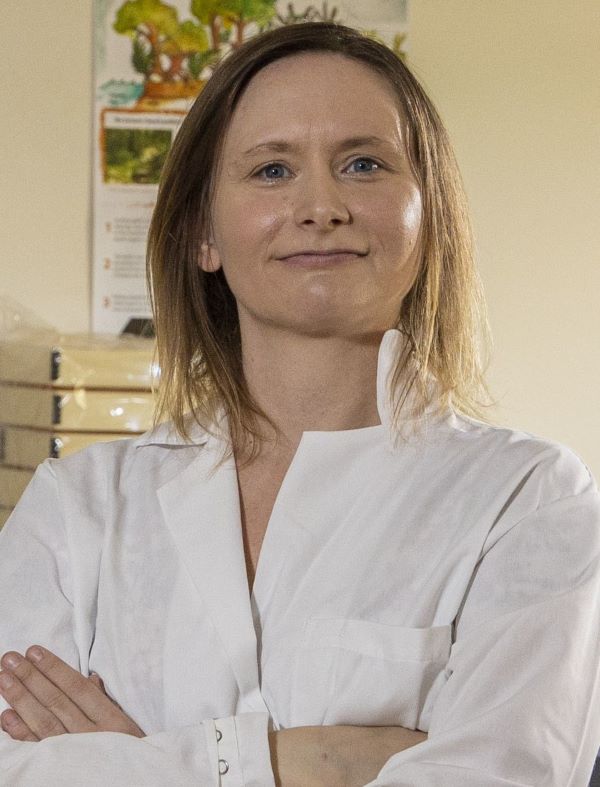Collapse of Ancient Maya City of Mayapan May Be Linked to Drought in 13th, 14th Centuries
Transdisciplinary study in Nature Communications combines history with archeological science to suggest that prolonged drought between 1400-1450 escalated existing societal tensions and eventually led to Mayapan’s collapse and abandonment.

Mayapan ancient maya ruins in Yucatan, Mexico (Credit: andyjkramer / iStock / Getty Images Plus)
Contact: Shelby Cefaratti-Bertin, Baylor University Media and Public Relations, 254-327-8012
Follow us on Twitter: @BaylorUMedia
WACO, Texas (July 21, 2022) – Drought may have led to an increase in civil conflict followed by political collapse in Mayapan, the ancient capital of the Maya in the Yucatán Peninsula, in the 13th and 14th centuries, according to a study published in Nature Communications that includes contributions by a Baylor University archaeologist.
Julie Hoggarth, Ph.D., associate professor of anthropology at Baylor, was among a team of researchers across the disciplines – led by Douglas J. Kennett, Ph.D., professor of archaeology at the University of California, Santa Barbara – who combined archeological, historical and paleoclimate datasets to explore the relationship between climate and civil unrest.
“This study is really innovative because it integrates archaeological science and history in a unique way, finding much accordance in the archaeological record with the described historical periods,” Hoggarth said.
Hoggarth and colleagues compared historical documents noting records of violence to radiocarbon-dated
skeletal remains from 205 human burials from Mayapan, searching for signs of traumatic injury. The authors then compared these instances to indicators of drought conditions. They found that increased rainfall was associated with a population increase in Mayapan, but subsequent decreases in rainfall were associated with conflict.
Through the combination of history and archaeology, a more detailed understanding of the correlation between climate and civil strength emerged.
“The surprising results are just how well the archaeology fits the historical record. Sometimes historical records can be biased, so we need to take them with a grain of salt. However, this study really does find that the ethnohistories that describe civil strife are backed up by the bioarchaeological and radiocarbon data,” Hoggarth said.
The political capital of Mayapan, which existed from 1200-1450, is particularly well-suited to examine the impact of climate on civil conflict because records of the city also exist in Colonial-Period documentary accounts.
In Pre-Columbian Mesoamerica, the impacts of rainfall levels on food production may have been closely aligned with human migration, population decline, warfare and shifts in political power. However, it also may have led to instances of resilience, transformation and sustainability in the face of climate pressures.
The researchers suggest that the prolonged drought between 1400-1450 escalated existing societal tensions and eventually led to the city’s abandonment.
With the collapse of Mayapan, residents migrated to other smaller, successful towns, and these adaptations provided regional-scale resiliency, ensuring that Maya political and economic structures endured into the 16th century until European contact.
The researchers conclude that human responses to drought on the Yucatán Peninsula were complex and serve as an important example for navigating future climate change, particular its role in exacerbating internal political tensions and factionalism in areas where drought leads to food insecurity.
“The practical implications of this study relate to the impacts that climate change will have on modern societies,” Hoggarth said. “Given that this and other studies suggest increased violence related to climate change, what will our modern societies do to try to prevent that?”
“This study is a cautionary tale that shows how severe droughts can exacerbate existing cleavages within society, to the point of breaking the entire political system apart,” she said.
ABOUT JULIE HOGGARTH, PH.D.
Julie Hoggarth’s research at Baylor University applies an interdisciplinary approach that integrates history, demography, archaeology and climate research to understand the impacts of abrupt climatic change from the Classic to Colonial Periods in the Maya Lowlands. Over the past several years, she has worked to compile archaeological and historic datasets from across the region to understand the effects of prehistoric and historic drought episodes on agricultural production and health for Maya populations.
Hoggarth’s new project – funded by the National Science Foundation – focuses on developing a high-resolution radiocarbon chronology for the Belize Valley, based at the sites of Baking Pot and Cahal Pech. Ultimately, this project aims to identify chronological correlations (or lack thereof) between episodes of severe drought from the ninth to 11th centuries with precisely dated archaeological evidence for political and demographic collapse.
She is currently working to develop comparative methods for investigating archaeological examples, where climate has impacted prehistoric societies. Identifying causal relationships is integral to this goal and her current work is strongly focused on chronology building. As such, she is developing the Archaeometry and Radiocarbon Sample Preparation Laboratory, which will offer analytical services for the preparation of organic samples for radiocarbon dating and isotopic measurement.
ABOUT BAYLOR UNIVERSITY
Baylor University is a private Christian University and a nationally ranked Research 1 institution. The University provides a vibrant campus community for more than 20,000 students by blending interdisciplinary research with an international reputation for educational excellence and a faculty commitment to teaching and scholarship. Chartered in 1845 by the Republic of Texas through the efforts of Baptist pioneers, Baylor is the oldest continually operating University in Texas. Located in Waco, Baylor welcomes students from all 50 states and more than 90 countries to study a broad range of degrees among its 12 nationally recognized academic divisions.
ABOUT THE COLLEGE OF ARTS & SCIENCES AT BAYLOR UNIVERSITY
The College of Arts & Sciences is Baylor University’s largest academic division, consisting of 25 academic departments in the sciences, humanities, fine arts and social sciences, as well as 10 academic centers and institutes. The more than 5,000 courses taught in the College span topics from art and theatre to religion, philosophy, sociology and the natural sciences. Faculty conduct research around the world, and research on the undergraduate and graduate level is prevalent throughout all disciplines. Visit College of Arts & Sciences.
